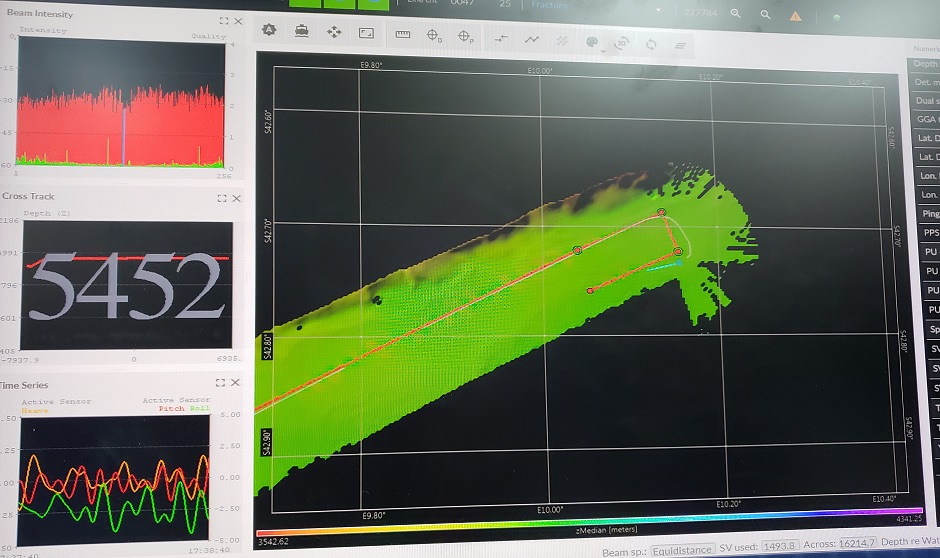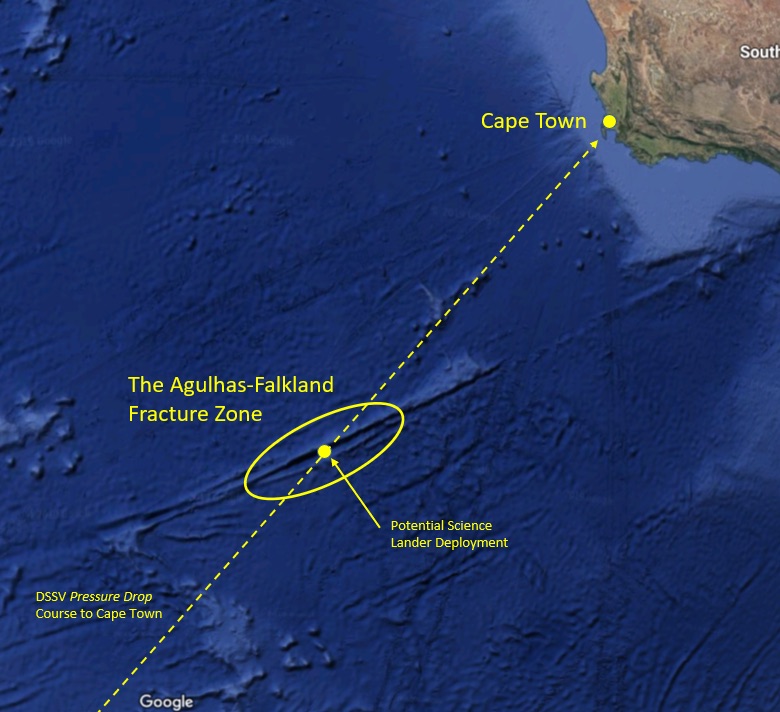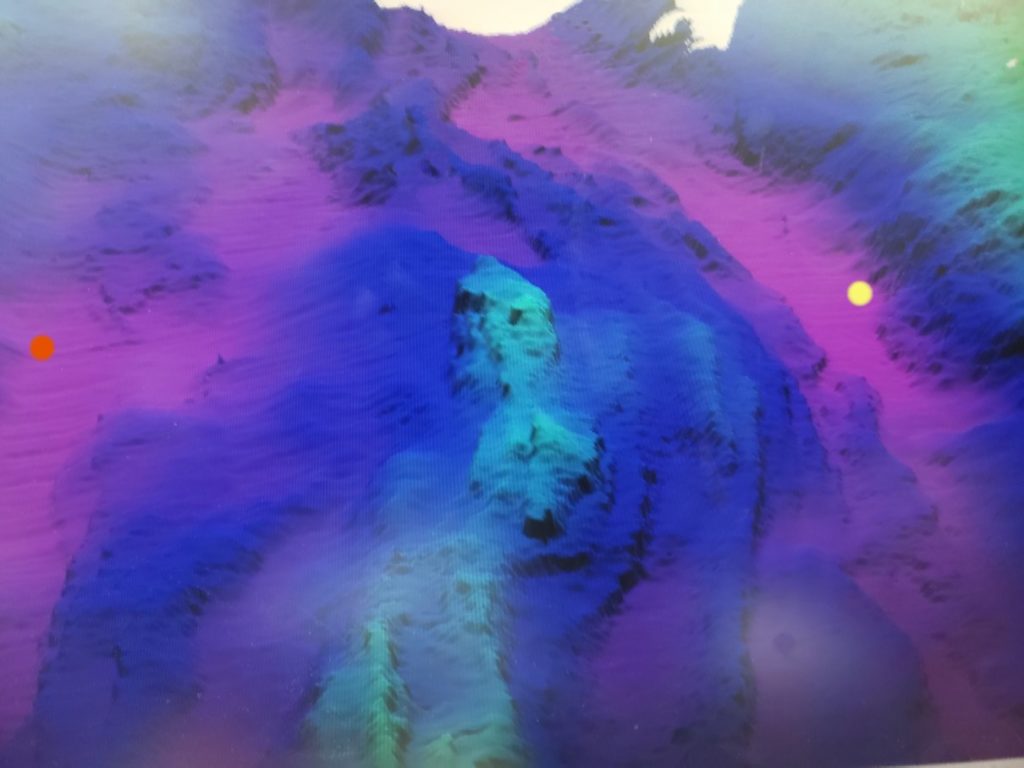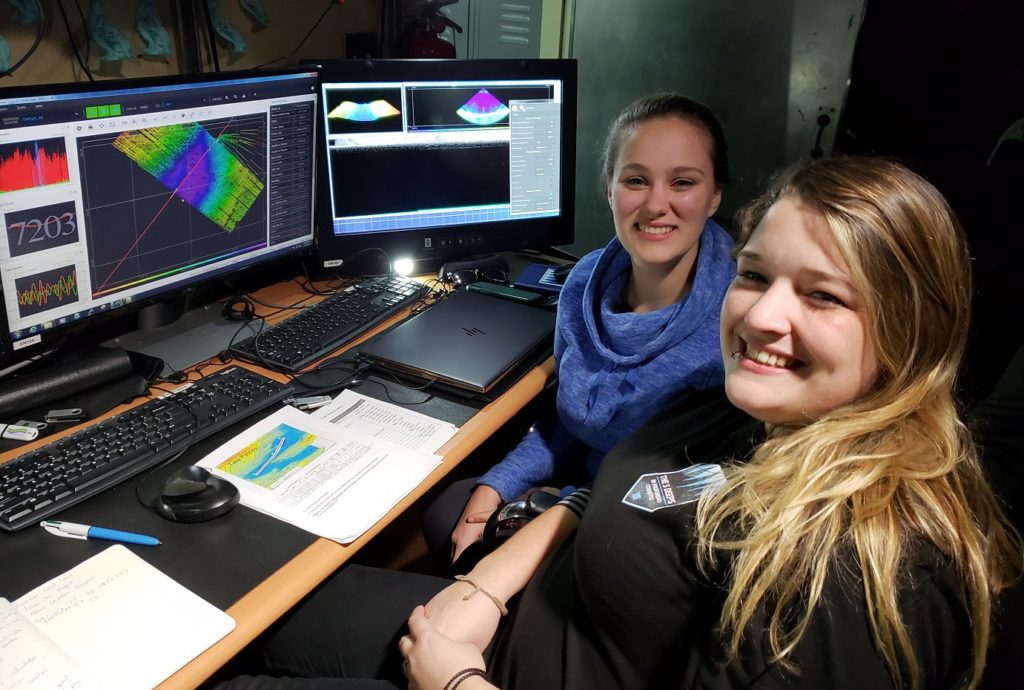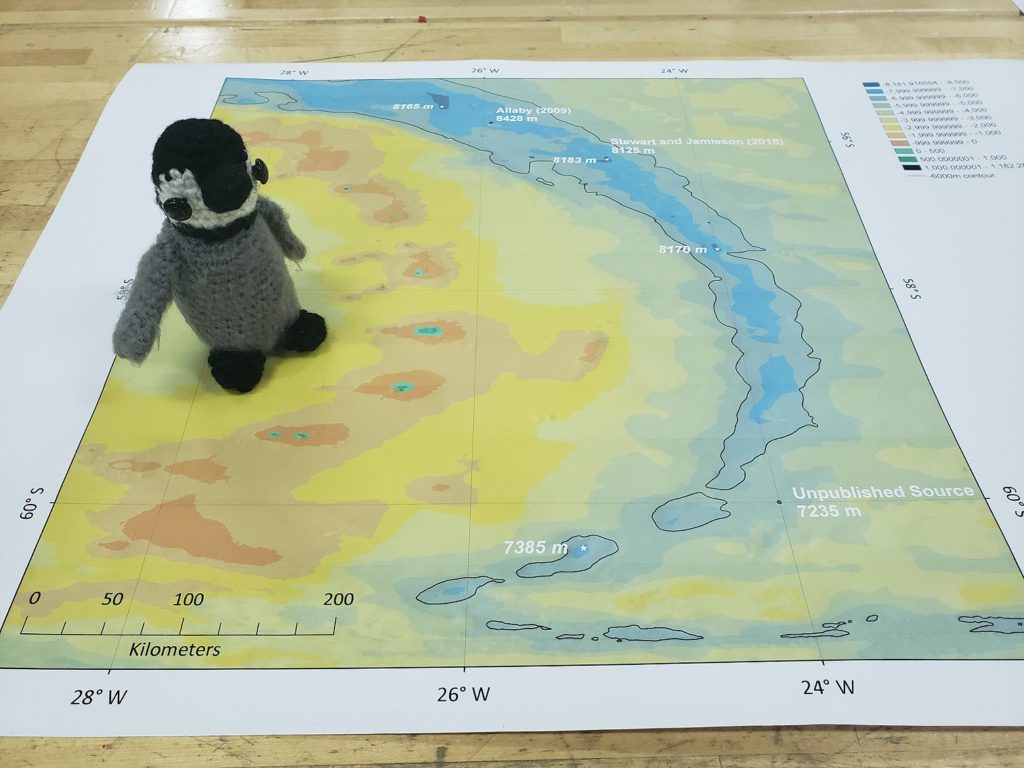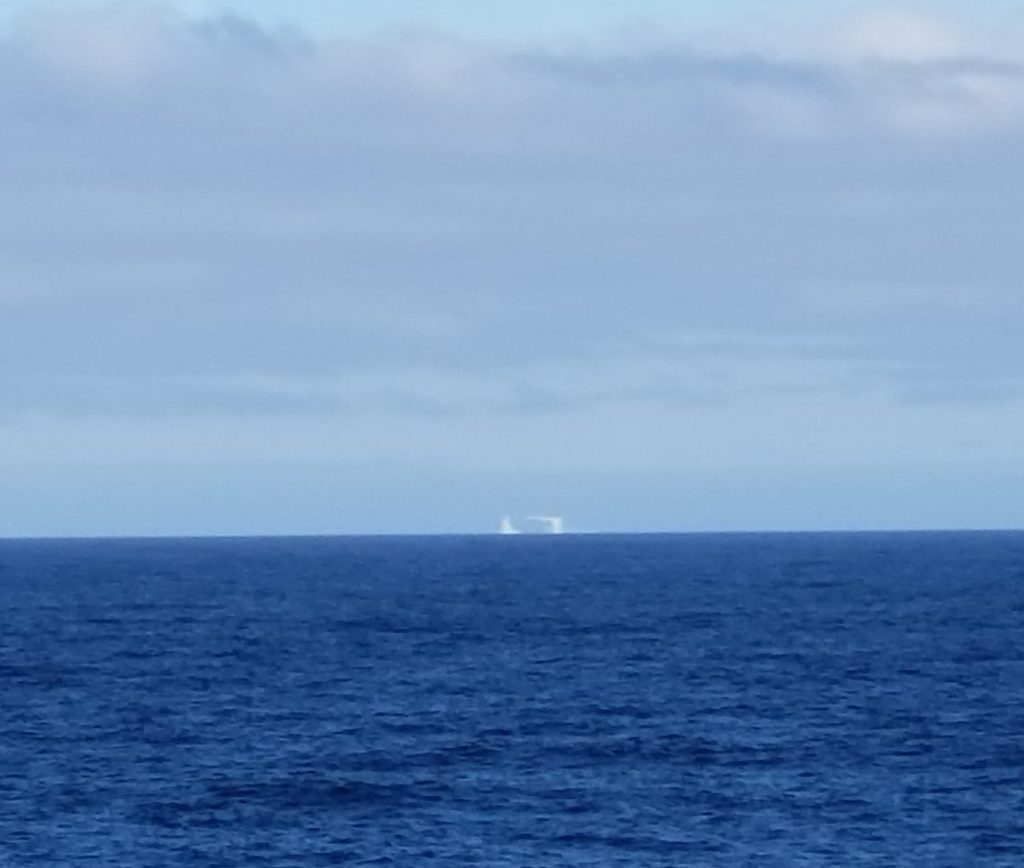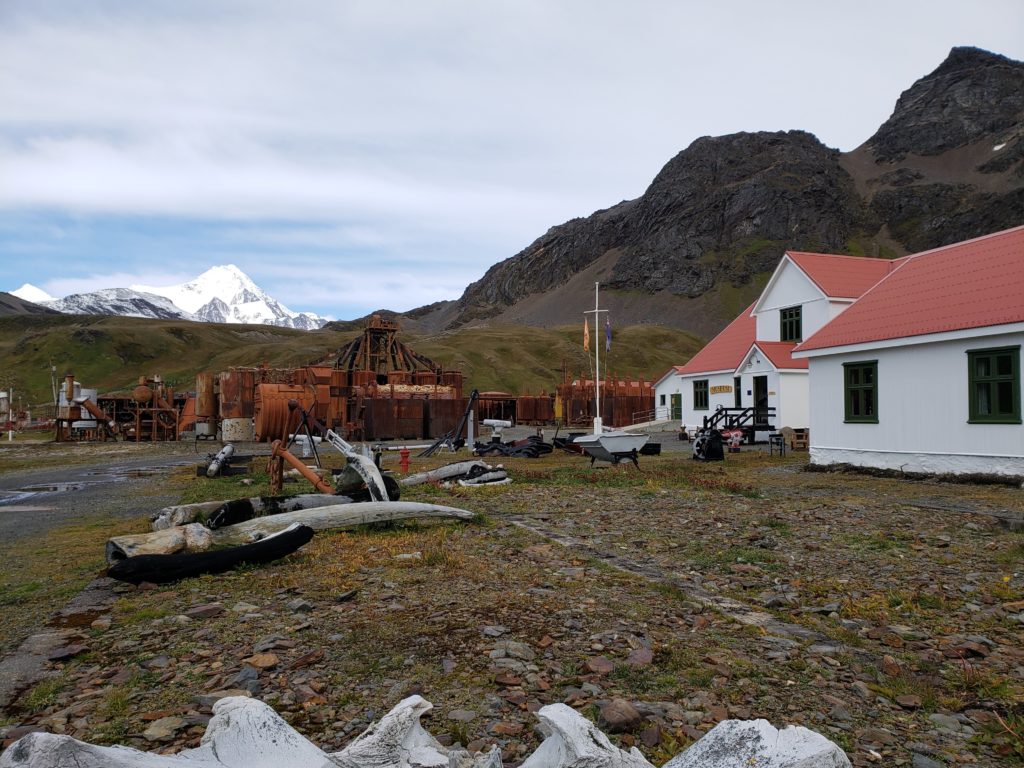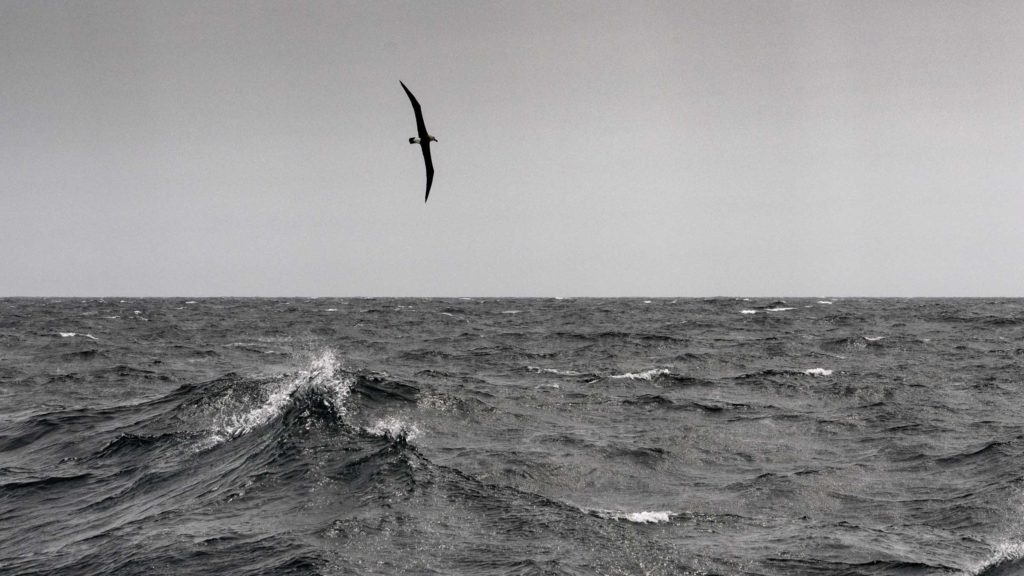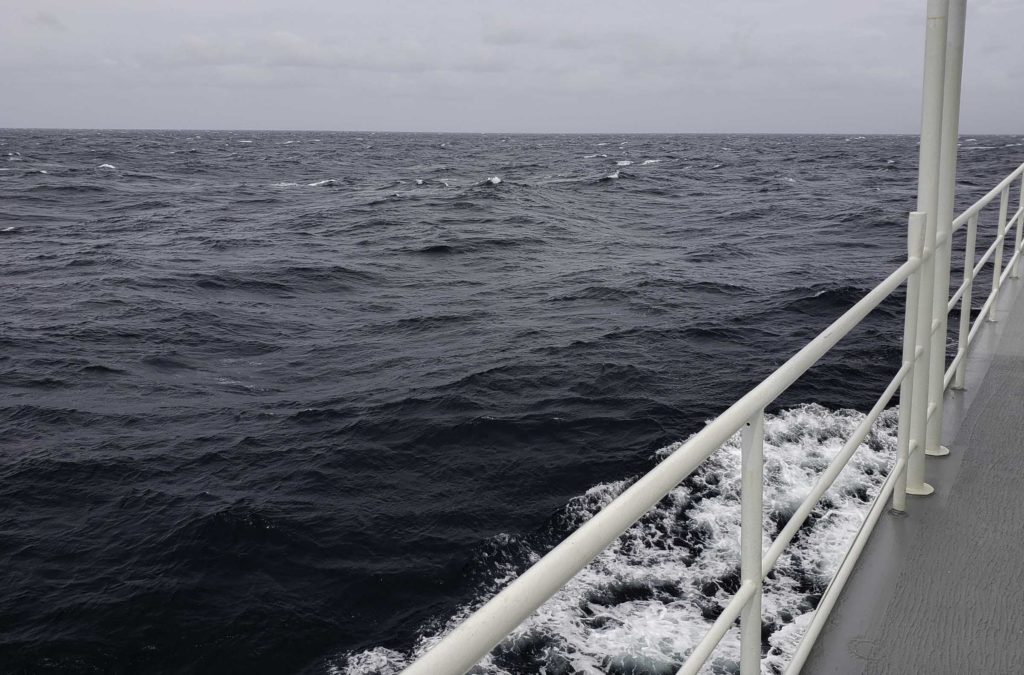Deep Dive 2
Southern Ocean Expedition Blog
Live updates from the team aboard Pressure Drop during the mission to dive to the deepest point in the Southern Ocean, in the South Sandwich Trench.
MISSION COMPLETE: February 2019


We arrived in sunny Cape Town this morning, escorted in by a handful of Humpback whales, and have thus closed the door on this part of the Five Deeps Expedition. The entire team is so pleased to have everyone returning home safely and with a successful dive to the bottom of the Southern Ocean. We are also very happy that the weather allowed us to map the entire South Sandwich Trench in detail for the first time, identify its true bottom, and discover ten major undersea features we hope to officially name. (I am proposing to name the deep basin where two of Dr. Jamieson’s science landers were lost the “Bitter Deep,” since it seems appropriate . . .) This will be the last update for this amazing part of the expedition, and we look forward to picking back up the updates when we rejoin the Pressure Drop and Limiting Factor in Bali, Indonesia in about a months’ time, to hopefully dive to the deepest point in the Indian Ocean. Two down, three to go.
Less than two days away from docking in beautiful, warm, Cape Town. It’s almost like the moonlight is pointing the way home (see photo).
It’s obvious that the entire crew is quite excited to get back to civilization. We had a practice life vest drill earlier today and someone asked: “Um . . . when exactly will we get to see land again?” We have been out at sea since we left South Georgia on January 31st, 19 days ago. None of us have seen land yet during the month of February. While not a long time for those who have served in a Navy, for a civilian that is quite a long time at sea – and in the Southern Ocean and South Atlantic, no less. Tomorrow will be a busy, but fun day of packing gear and preparing to go home. So very happy everyone is coming home safely and we were successful with the mission of diving to the bottom of the Southern Ocean.
It certainly feels that we are in the homestretch of this phase of the expedition. We recovered science lander Skaff early this morning after he collected some new data on the Agulhas Fracture Zone. After a very windy evening yesterday, the weather has really settled down and we are now enjoying clear blue skies, calm waters, and warm air as we steam the last three days into the port of Cape Town. The expedition team has begun to secure their equipment for transport, making lists of things to do and fix before the next phase, and sorting out flights and itineraries. It’s nice to be out of The Icy Grey that we have been living in for the past three weeks. On the Windy.com weather chart below, you can see we are almost being chased out of the South Atlantic by a really big storm (red) to our southwest (blue is nice weather).
We spent most of yesterday scanning the — quite long — Agulhas Fracture in the middle of the South Atlantic. Like so many places we’ve sonar’d on this expedition, it has surprised us. It is much more shallow that we were led to believe, by about 1,000 meters(!) which again shows just how little we know of our seafloors and planet. The bottom of the fracture was also extremely flat (picture, green area), almost like an enormous football field and so we were trying all day to find the best place to drop Skaff, one of our science landers. We finally settled on a target and he is on his way down now to just over 5,400 meters in depth. He’ll stay there overnight to collect biological and other samples, drop his weights tomorrow morning, and a few hours later we’ll pick him up and head directly to Cape Town.
Blue skies and calmer seas, now that we are above 45 degrees south latitude – it’s nice to be back in warmer climes. We are still in a very remote area outside all normal shipping lanes, but at least we are now north of the ferocious weather band to the south (see Windy.com weather map with storms indicated in red, below our position — the yellow dot). We are getting science lander “Skaff” ready for its mission to the bottom of the Agulhas Fracture Zone very late tonight. We hope to get some good video, biological samples, sonar maps, and possibly a soil sample using a new method with which we are experimenting. After this, all that is left to do is head towards Cape Town and crew changeover.
The weather has calmed down a bit, allowing us to make rather excellent speed. The air is also slowly getting warmer as we make our way further north, which is great after weeks of near-freezing cold. When examining our path to Cape Town a week ago, we noticed that we would pass right over a very interesting – and apparently never before mapped or sampled area – called the Agulhas Fracture Zone. It is a large crack in the middle of the ocean caused by tectonic plate movements that is quite massive. We are going to briefly pause on our way to Cape Town, probably on Sunday morning, to map it as best we can and send a science lander down to get video and biological samples. This mission isn’t just about diving deep, it is also very much about science, and we will do what we can, when we can.
We have finally broken free of the seeming perpetual overcast of the deep South Atlantic and see solid blue sky for the first time in a while. The ocean swell and waves are still quite high, rolling the ship pretty solidly now and then, but we are making good speed to Cape Town and should be there in a week. A few friends asked me to take a picture with a certain adult beverage, so I am obliging here: “When I dive to the bottom of the ocean, I don’t normally celebrate with a beer. But when I do . . . ” Stay thirsty, my friends.
We are now two days into our 10-11 day transit to Cape Town from the South Sandwich Trench. We continue to execute sonar mapping in this untraveled part of the world, with the intention of donating the information we collect to the GEBCO project which seeks to map the entire seabed by 2030. Doing what we can to assist. As one can see from the Windy.com map below, we have quite a wall of storm activity between us and our destination, so we may have a bit of a bumpy ride the next few days. There is no way around them – we just have to push through. (Our current location is shown as the yellow dot, and our destination is at the end of the arrow. Storms and heavy seas seas are marked in red . . . Yeah, I know.)
We are solidly Cape Town bound. It appears we used up whatever good weather was to be had in the South Sandwich Trench area and we have an expedition schedule to keep. We are plowing ahead through heavy swells and a few icebergs along our path (you can see one off in the distance in the photo). We have already been at sea for nineteen days, and have at least another ten ahead of us, depending on the weather. Meanwhile, we are writing reports on the expedition’s findings and what we can do to improve operations, as well as updating Wikipedia with our new-found information about the trench. It’s quite fun to update Wikipedia with new scientific and cartographic information that your own team just collected.
The South Atlantic continued her tortuous teasing of us today. She presented us with a last-minute, 15-hour weather window to potentially dive the deepest point in the South Sandwich Trench, and this morning we launched the Limiting Factor into the water. A surprise heavy swell caused the front part of the sub to strike the cushioning “bumper” on the rear of the ship and the force sheared away a secondary camera. The incident also caused a series of unfortunate events that would have made it impossible to get to the bottom so we aborted the dive. It was frustrating, but this ocean has a reputation of wreaking havoc on the best-laid plans and efforts of explorers. The weather has closed down again and our ultimate mission to dive to the deepest point in the Southern Ocean was a success, so we are now headed to Cape Town and moving on with the next phase of the expedition: the Java Trench in April.
The South Atlantic weather remains as unpredictable as ever. We were 120 miles to the northeast, departing for Cape Town when the weather forecast significantly shifted. We now see good diving conditions for Sunday above the (new) deepest point of the entire South Sandwich Trench. We turned 180 degrees around to head back to the Trench for a possible dive. Before this expedition, the Meteor Deep – shown as a red dot – was believed to be the deepest point. We now know with high certainty that it is not — it is instead where the yellow dot is. We are going to propose naming this new point the “Pressure Deep” after the DSV Pressure Drop (our ship), which is the traditional way you name new oceanographic features. Also shown is a truly massive, 18-mile-long iceberg we encountered on our way back (which looks remarkably ‘Game of Thrones’-ish, a few onboard commented).
A very interesting day with respect to our second main objective on this expedition: thoroughly mapping the South Sandwich Trench for the first time. It is full of surprises. With uncooperative weather for a dive, we were on our way to Cape Town when we discovered, very unusually, a secondary trench system, which was totally unpredicted by the gravity-based satellite mapping that is the standard for unexplored areas. It turned out that this new depression has the deepest point. This highlights the importance of a great sonar system to target one’s dives . . we almost dove in the wrong place. The weather is pretty awful where this new “Deep” is, so we won’t be diving there either, but we will continue to map the trench system and fill in the blank areas for future exploration. If this isn’t true exploration, I don’t know what is, and that is what makes this all so exciting.
Today we finished mapping the entire length of the South Sandwich Trench that straddles both the Southern and Atlantic oceans. We have discovered that the deepest point in the entire trench is not the commonly cited Meteor Deep (which is in the Atlantic portion), but a separate, unnamed depression about 40 miles to the west. We might have to revise Wikipedia after this . . . We believe there is a narrow weather window on Sunday, February 10 that might allow a dive in that location, so we will be preparing for the dive over the next two days. Weather, however, will dictate if we attempt it or not. As the forecast shows, storms to the northwest will make it a close call.
(Image: Forecast for February 10th, care of WIndy.com, showing the pocket of good weather for a possible attempted dive.)
It’s getting a bit rougher out here with 3-meter seas the norm for now. Despite this, we continue with our secondary mission to fully map the South Sandwich Trench which has never been done before. The image provided shows just how much detail we are able to achieve with our Kongsberg sonar compared to the low-resolution data available through satellite-based gravitational analysis – the current standard. Hopefully we are identifying interesting geological features for future expeditions to explore. We have solid connectivity back to the mainland with data and voice through our Inmarsat satellite dish, Iridium phones, and IT services by Yachtprojects International/Procom365, which is amazing considering how incredibly remote we are.
Another dive complete! Victor has made history in becoming the first human to successfully dive to the deepest point in the Southern Ocean, in the South Sandwich Trench – at 7,433.6 meters/24,388 feet. The team overcame the logistical and weather-related challenges of this dive, due to the extremely remote location. Located just north of the Antarctic continent, the Southern Ocean’s South Sandwich Trench has not been thoroughly explored and is the only subzero Hadal zone (deeper than 6,000 meters) in the world. As a mission we are incredibly proud of the team, congratulations all, a great achievement!
We’ve arrived at the Southern Ocean and begun mapping the southern portion of the South Sandwich Trench. This has never been done before and we are investigating three primary “targets” that might potentially be the deepest point of the Southern Ocean, which is defined as the body of water south of 60 degrees latitude. Once we are 99% confident we have identified the deepest point, we will begin dive preparations – assuming the weather stays good for launch & recovery. Excitement is naturally increasing, as we are venturing into areas that have truly never been explored before . . .
We are close to the area we believe holds the deepest point in the Southern Ocean. We have been dodging icebergs all day and just passed the southernmost islands in the South Sandwich Islands chain: Thule and Cook Islands. Volcanic islands both, we saw wisps of steam curling up from their summits and cold lava flows on their flanks with icebergs just offshore. Quite an amazing sight. Meanwhile, down below, we are planning the next full day of sonar mapping so we can identify with certainty the deepest point in the Southern Ocean for the upcoming dive. Fortunately, the weather the next two days looks promising. However, some harsh weather will follow this relatively good spell, maybe three days away.
We pulled into Grytviken, South Georgia before dawn this morning and tested our improved launch-and-recovery process for the sub. It went well, and we look forward to trying it out in the open sea a few days from now. The entire crew then went ashore and had a wonderful time visiting the former whaling station, museum, and the grave of famed British explorer Sir Ernest Shackleton. Abundant wildlife of fur seals, their pups, and King penguins were the real high point of the visit with great opportunities for photos. We were back at sea by lunchtime and are headed to the South Sandwich Islands and thereafter, the Southern Ocean.
We’ve definitely crossed the Antarctic convergence zone, seeing the temperature drop to about 5 degrees C (41 deg F) and significantly higher waves. The ship is being rocked – a lot – sending lighter items flying now and then and making it difficult to sleep. Fortunately, we are sailing into Grytviken tomorrow morning and we will see a respite from the quite rough seas. We did, however, see a few Fin whales for a while – blowing their spouts as they cruised alongside us – and some friendly albatrosses. The whole crew is looking forward to seeing land again and experiencing the history of South Georgia island. By tomorrow afternoon we will continue on to the Southern Ocean and its never-visited Deep.
It’s definitely getting a bit colder — we’re down to 10 degrees C (50 F) and the waves are picking up a bit more. We’ve triple-checked the securing straps for the Limiting Factor in its cradle (picture) as we head into a bit of harder weather approaching South Georgia Island. We hope to pull into the main port, Grytviken, the day after tomorrow. We will clear British customs there and briefly go ashore to see the historic sights. We intend on staying there for only about 6 hours so we won’t miss any bit of some expected good weather on the way to the South Sandwich trench. So far, the long-term weather forecasts look reasonably good for us – but that can change very quickly in this part of the world.
Began the process of thoroughly cleaning all clothing we will wear on South Georgia Island – to prevent any bio-contamination when we land. Had a detailed briefing in mission control over the navigation and dive plan for after we leave South Georgia in a few days’ time, trying to maximize the amount of mapping, diving, and science we might be able to accomplish within one or two “decent” weather windows we might get. It’s a large area and so much to do.
Long-term weather projections look promising for when we might be in the trench area around February 2-4, but meteorological predictions out here can be notoriously inaccurate, but we remain hopeful they are right for once. For movie night, part of the crew watched “20,000 Leagues Under the Sea.” Gave a few tours of inside the Limiting Factor to members of the crew.
Continuing southeastward in continuing calm weather. A few albatrosses found us and did lazy circles around the ship – a sign of good luck. Briefings conducted on what to expect at South Georgia Island and the rules for preserving the security of its ecology. Maintenance and preparation of the submersible began in earnest.





